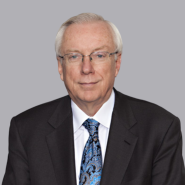Safe Harbor (35 U.S.C. 271(e)(1)) and Medical Devices
- October 13, 2020
- Article
Associated People
Associated Technologies
In two decisions this year district courts have addressed the “safe harbor” provision of 35 U.S.C. § 271(e)(1) in motions to dismiss a patent infringement count. The first involved the display of artificial heart valves by Meril Life Sciences Pvt. Ltd. (Meril) at the 2019 Transcatheter Cardiovascular Therapeutics Conference (“TCT Conference”) in San Francisco, California. Edwards Life Sciences Corporation (Edwards) asserted that the display infringed its 5 patents on the displayed valves under §§ 271(a) and (g) by importing the valves made using its patented process. Meril defended by asserting that such display was protected by the safe harbor provision. The facts were not favorable. First, Meril did not have a marketing application pending with the FDA. While a pending application is unnecessary there must be evidence that the acts were calculated to lead to the possible submission of such evidence. See Merck KGaA v. Integra Lifesciences I, Ltd., 545 U.S. 193, 202 (2005). Alternatively, the activity was at least in part to attract clinical investigators for FDA trails. See Telectronics Pacing Systems, Inc. v. Ventritex, Inc., 982 F.2d 1520, 1523 (Fed. Cir. 1992). There was no evidence that defendants recruited or could have recruited investigators for studies that could be submitted to the FDA. Edwards asserted that Meril’s sole objective was to promote sales in Europe. Thus, Teletronics was deemed irrelevant.
The court noted that the safe harbor provision is not a “per se” rule exempting conference displays from infringement since this would conflict with Merck, supra, and Amgen Inc. v. Hospira, Inc., 944 F.3d 1327, 1339-41 (Fed. Cir. 2019) (affirming jury finding that drug batch manufacture during FDA approval fell outside the safe harbor because evidence showed it was not required and was intended for commercial inventory). The court was convinced that the purpose of the display was for commercial purposes only. The case stands as a reminder that the safe harbor provision is limited.
The second decision involves involves software, a class II medical device. The FDA applies different levels of scrutiny to different types of medical devices before approving or clearing them for market. Medical devices are divided into three classes (Class I, II or III) based on the level of risk they present. 21 U.S.C. § 360c(a)(1). Each Class is subject to different regulations. Id. Class I devices are the lowest risk category, while Class III is the highest. § 360c(a)(1)(A)-(C). Class II devices must be approved under the 510(k) “premarket notification” process. Under the 510(k) process, if the Class II device is deemed ‘substantially equivalent’ to a pre-existing device with prior clearance, it can be marketed without further regulatory analysis. Review of a 510(k) notification is less rigorous than the FDA’s “premarket approval” process, which is required for Class III medical devices.
In Carl Zeiss v. Topcon Medical System, Inc., Zeiss in its complaint did not assert any facts from which one could conclude that Topcon’s allegedly infringing activity was not protected by the safe harbor provision of § 271(e)(1). See Ashcroft v. Iqbal, 556 U.S. 662, 678 (2009) and Bell Atl. Corp. v. Twombly, 550 U.S. 544, 555 (2007). Zeiss primary argument was that a class II medical device did not trigger the safe harbor provision.However, the Federal Circuit in 1997 decided that the safe harbor provision applies to all classes of medical devices. See AbTox Inc. v. Exitron Corp., 122 F.3d 1019, 1028 (Fed. Cir. 1997).
The takeaway from these cases is to assert facts in the complaint from which a court could decide that safe harbor did not apply.Recent Publications
5 IP Rules to Know to Protect Your Business in the United States (article in French)
Coaching INPI Newsletter










 Counseling & Strategic Advice
Counseling & Strategic Advice IP Transactions
IP Transactions Litigation
Litigation PTAB Proceedings
PTAB Proceedings Start-Up
Start-Up Technology Transfer
Technology Transfer Trademark & Designs
Trademark & Designs U.S. Patent Procurement (Application Drafting & Prosecution)
U.S. Patent Procurement (Application Drafting & Prosecution)








